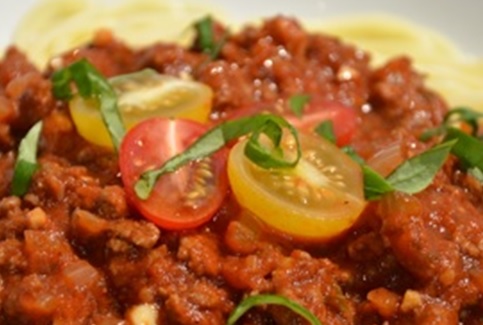The homemade pasta sauce recipe, a foundation of Italian cuisine is typically made with tomatoes – a lot of tomatoes – and with or without meat. A homemade pasta sauce without meat is known as a marinara sauce and originates of the Naples region of Italy – home to the pizza. A pasta sauce recipe with meat, however, originates of the northern regions of Italy – Bologna – and is, in fact, called a Bolognese sauce, or more specifically, Ragù alla Bolognese.
The Italian tomato pasta sauce recipe was not an overnight success after tomatoes were brought to Europe from Central and South America and introduced to Italy. In fact, tomatoes were so imilar in appearance to the nightshade plant – poisonous flora – they were originally somewhat suspect before being adopted in the Naples region – home of the pizza – and then throughout Italy. Tomato sauces are also highly prevalent in Mexican, Spanish and French cuisines as well as North and South America. In fact, the largest tomato festival in the world – La Tomatina – is an enormous food fight drawing tens of thousands of people that happens every summer in the town of Buñol near Valencia, Spain.
Fun fact: Tomatoes are fruits that are considered vegetables. As are cucumbers and zucchinis.
The tomato sauce is an integral part of Italian cuisine, particularly for pizza and pasta but also serving as a base or foundation for many stew based dishes including chicken cacciatore, ossobuco and others. A sauce Bolognese or meat pasta sauce can be served over your favorite pasta – or in your favorite pasta dish such as lasagna, rigatoni or any stuffed pasta creation you might decide to make.
While tremendously versatile with the addition of vegetables, meat, mushrooms and more, the simple tomato sauce has remained enduringly popular of its own accord as well as the base for Naples place in the culinary world – pizza, calzones, panzerottis. It is also – of course, – the foundation of many a pasta sauce.
Unfortunately for some – with their high acidity, tomatoes can trigger acid reflux. The addition of baking soda helps mitigate and neutralize that acidity without sacrificing taste. A fresh tomato pasta sauce will hold in the fridge for four or five days. In the freezer – well sealed, your tomato pasta sauce recipe can last up to three months.


 Cook:
Cook: 
